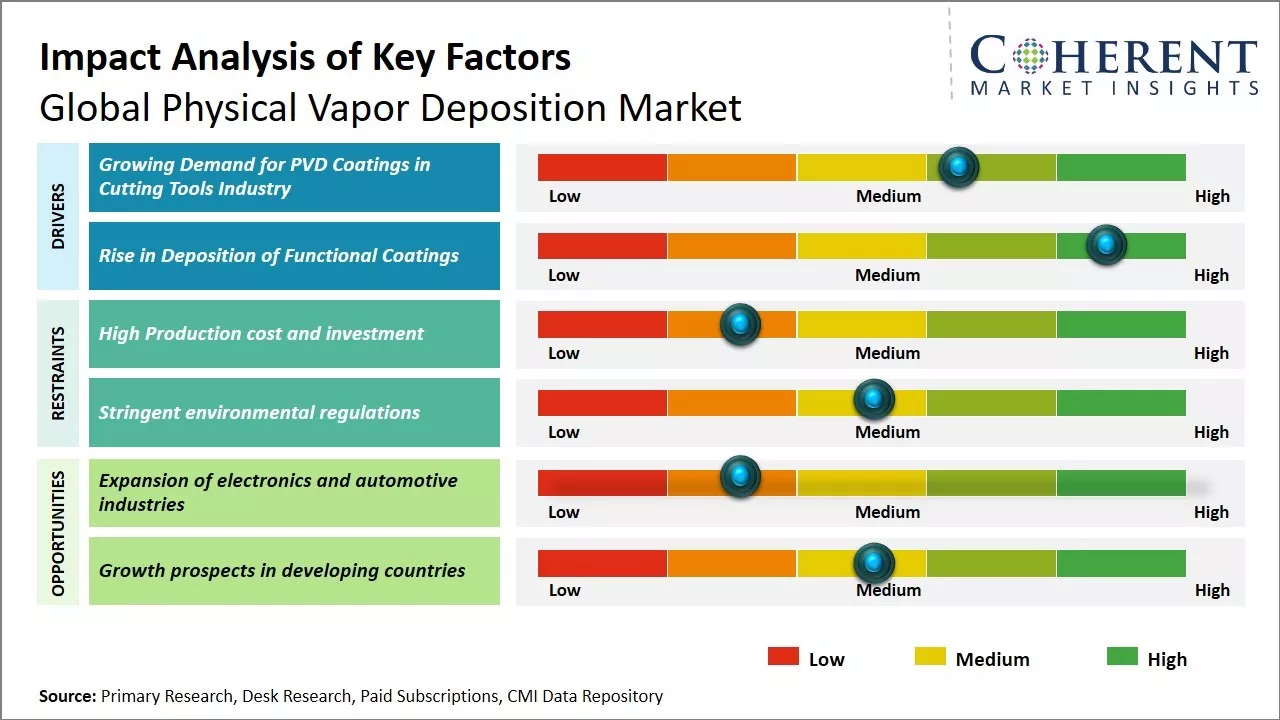The Physical Vapor Deposition Market is estimated to be valued at USD 25.58 Bn in 2025 and is expected to reach USD 39.52 Bn by 2032, exhibiting a compound annual growth rate (CAGR) of 6.4% from 2025 to 2032.

To learn more about this report, Request sample copy
The market growth is driven by increasing demand for PVD coatings from various end-use industries such as microelectronics, data storage, cutting tools, solar products, and medical equipment. The trend in the Physical Vapor Deposition market involves growing demand for PVD functional coatings. Emerging applications in the healthcare and electronics industries will require advanced thin film coatings for their anti-microbial, anti-corrosive and low-friction properties. Advancements in substrate materials and refinement of PVD process parameters also contribute to the proliferation of these coatings across multiple applications.
Growing Demand for PVD Coatings in Cutting Tools Industry
The cutting tools industry has been one of the major end users of PVD coatings for many years now. PVD coatings help improve the performance of cutting tools manifold by increasing their hardness, wear resistance and high temperature resistance. This allows the tools to maintain sharp cutting edges for a longer period of time. As a result, they can be used for machining tougher alloy steels and other difficult-to-cut materials. The coating also reduces tool wear and increases the lifetime of the cutting tools. All this directly helps machine manufacturers and part producers to boost productivity and lower production costs through enhanced tool life and fewer Replacements. With the growing complexity in materials and tightening tolerances demanded in manufacturing, the need for tool coatings has increased tremendously. Modern day CNC machining requires tools that can withstand high cutting speeds and temperatures without failing prematurely. PVD coatings are increasingly becoming the coating of choice as they prove superior in high-precision machining of difficult alloys. Additionally, the automotive and aerospace industries, which are major consumers of precision machined components, are pushing for higher material removal rates through tool coatings. This has motivated cutting tool manufacturers to expand their PVD coated tool portfolio. The availability of multi-layer and alloy coatings tailored for specific applications has also augmented market growth. Overall, the critical role that PVD coatings play in tool performance enhances productivity is driving their increased use in the cutting tools segment.
Joining thousands of companies around the world committed to making the Excellent Business Solutions.
View All Our Clients